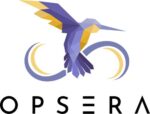Many software product firms typically focus on developing cutting-edge software that are customized and deployed at the users’ locations. It is not uncommon for mission-critical products, like ERP or CRM systems, to go live six or eight months after the contract is signed—perhaps even longer.
But in recent times, SaaS and cloud computing have emerged as disruptive innovations. Some pundits even talk about the death of IT as we know it. The new deal clearly places the day-to-day software operational responsibilities on the vendor rather than on the IT department of the customer.
The most striking historical parallel for this phenomenon is the oft-quoted evolution of electricity as a commodity service over customers having to install power generators. This tectonic movement towards a service-oriented business landscape is driving firms to redefine their core competencies.
To stay competitive and effective, SaaS providers can source their contextual/non-core activities through partnerships. After all, they themselves are in business because their customers have chosen to outsource something, whether it’s e-mail services, office applications, CRM, accounting, or whatever.
What does this mean for software developers?
Given the necessity to shrink go-to-market timeframes, the complexities of building new software are abstracted by using frameworks and reusable plumbing components. For example, Platform-as-a-Service offers a complete platform replete with IDE and visual development methodologies to accelerate development. This phenomenon is a logical progression of how, for example, Java-based software is built with frameworks like Struts and Spring. In fact, PaaS is often proclaimed the Cloud Operating System for SaaS applications.
Similarly, Infrastructure-as-a-Service is an excellent way to expand/contract the computing power and memory based on user traffic. Pay-per-usage is the norm in such xxxx-as-a-Service environments.
These are all significant innovations and offer excellent advantages by simplifying development processes, transferring responsibilities to other vendors who are best equipped to handle such complexities, and shrinking go-to-market times. But the challenge lies in the ensuing tight coupling with the underlying platform.
Your software is not as portable as it will be if you do develop your software from scratch. This leads to the classic build-vs.-buy conundrum. While ground-up-development and PaaS are two ends of the spectrum, there is the middle path too. Some firms provide off-the-shelf SaaS building blocks (e.g., tenant provisioning, license management) in the technology platform of your choice. Such go-to-market accelerators can be leveraged to avoid lock-ins.
Another key concern is that because of the evolving state of the cloud trend, the market is prone to acquisitions and consolidations that may have an adverse impact on you. The strategy that you adopt should be based on the market opportunities and your organizational strengths or weaknesses.
What about a la carte cloud services? The abstraction of complexities is a constant theme in modern life. Command-line OSes became graphical point-and-clicks. Application-server vendors famously urged developers to focus on business logic while they promised to take care of under-the-hood connection pooling, transactions and concurrency.
Similarly in the SaaS world, there are specific cloud services to perform operations such as customer management and billing (like OpSource), payment processing (like Authorize.Net or PayPal), or integration (like Jitterbit and Boomi). Such a la carte services give you the flexibility to “assemble” (not build) SaaS applications better and faster. Apart from the typical threats of this approach, such as lock-in and the prospect of the vendor closing shop, the additional downside is that such services may be costlier in the long run if there is significant or constant usage.
Service delivery requires building software and providing business-outsourcing services. You might say that Business Services = SaaS + BPO. The SaaS model often turns software vendors (who have traditionally partnered with outsourced service providers) and BPO firms into competitors. These markets have seen interesting consolidations in the last three years, and the acquisition trend will accelerate as business service providers recognize the potential of SaaS solutions to enhance their offerings, extend their market reach and increase profitability.
For example, the IT service and BPO firm Cognizant Technology Solutions acquired marketRx (a provider of Web-based analytics and related software services to global life science companies) and managed service provider AimNet Solutions. A few months back, NorthgateArinso, a human-resources service provider, bought an on-demand human-capital management software company. In effect, the trend points towards the convergence of SaaS and BPO.
Just as software companies are adapting themselves to the on-demand world, channel partners are also expected to unlearn a few things and pick up new skills. For example, business process consultancy is a core skill set that will play a lot more important role than technical competencies.
In general, lower recurring and implementation fees are expected to replace the traditional revenue model. But the increased number of on-demand engagements is expected to keep the partners happy.
While some may even question the importance of resellers in the SaaS model, the reality is that VARs and system integrators have deep penetration in the marketplace. They bring in valuable domain knowledge, implementation experience, and data integration and migration skills that are important for customers to begin using on-demand software. It is not surprising that leading SaaS companies have built extensive partnership networks to scale their businesses.
As SaaS traverses the hype cycle, the industry is increasingly looking at it as Service-as-Software. This has led to major changes in the product management, marketing and selling functions. The SaaS ecosystem is a complex interplay of software vendors, service providers, integrators, BPOs, PaaS and IaaS. Strictly speaking, the DNA of a product company varies from that of a services company. But the reality is that several vendors offer on-premise as well as on-demand software.
The market forces that have brought about this change have mandated multiple players to work together to meet the ever-expanding and personalized needs of the end users. While the promise of mass customization still remains afar, collaboration and multi-sourcing are key in this brave new on-demand world.
Karthik Viswanathan is a SaaS architect at Aspire Systems in India.





